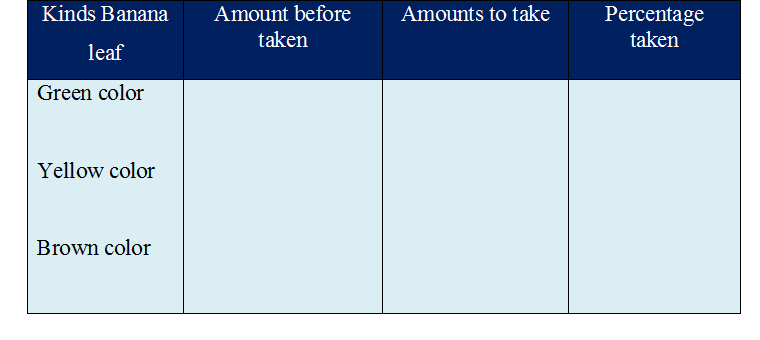Natural Selection
Living things need a suitable environment in order to survive well. But the environment is not always permanent but can change over time and the change affects the living organisms in which the living organisms must adapt to environmental changes. The ability to respond to environmental changes outside the organism is called adaptation. Living beings capable of adaptation are called adaptive living beings. The greater the adaptability of a living things, the greater the chance of survival of the living creature.

Natural selection is the differential survival and reproduction of individuals due to differences in phenotype. It is a key mechanism of evolution, the change in heritable traits of a population over time. Charles Darwin popularised the term "natural selection", and compared it with artificial selection. Source
The living beings that exist in this world have a high diversity, no two living beings are exactly alike. If there is a change in the environment, then only living things that have the appropriate diversity that can survive, this is called natural selection. Nature selects the living creatures, so only the corresponding living beings can survive and produce offspring. Natural selection causes the population to change.
Selection means election, and nature means everything that exists around living beings, or nature means the environment in which the living beings live. The notion of natural selection is the natural ability to filter against all living organisms in which only organisms are able to adapt to the environment to be saved, while those unable to adapt will die.
Natural Selection Factors
Nature selects all living things in it through several factors, among others
a. Environmental factor:
• Availability of food
• Limitations of living space and protection
• Sunlight
• Water
• Oxygen
• State of temperature (which is too cold or too hot)
• Season change
b. Predators
c. Parasite
d. Epidemic of a disease
Due to Natural Selection
Some of the consequences of natural selection include:
a. Extinction of certain species. Examples of living things that have become extinct due to natural selection are:
• Wild quails are increasingly extinct, due to the quail living environment in rocky areas and clumped patches of land increasingly scarce.
• Javan rhinoceros and Sumatran rhinoceros, caused by the loss of lowland forest and hunting, traditional medicine in the Far East (mainland China) are still many who use the basic ingredients of Rhinoceros horn
b. The formation of a new species of evolution. Living things that can adapt to environmental conditions will remain alive and continue to multiply. Example: Various kinds of Finch live on the Galapagos archipelago.
- Learning objectives
To determine the effect of natural selection on the survival of living things
2. Simple media that can be used
Three colorful rectangles of banana leaves
a. Tools and materials
• Stopwatch
• String of raffia
• Scissor
• Tray to accommodate pieces of banana leaf
• Fields or a plot of land overgrown with short grass
• Banana leaf color (green banana leaf / fresh leaves, yellow banana leaf and brown banana leaf)

b. How to make it
- Cut out a green rectangular banana leaf with the size of 2 x 1 cm for 100 sheets

- Do the same for yellow and brown banana leaves
3. How it Works
a. Prepare the colorful banana leaves that have been cut into rectangles each with a total of 100 sheets.

b. Combine the three kinds of banana leaves in one container.

c. Make a plot with a strap of 100 x 100 cm on a piece of grass-covered soil.

d. Sprinkle all pieces of the rectangular banana leaves evenly on the plot.

e. Students act as insectivorous birds living on grass (predator) while banana leaves serve as living creatures with certain characteristics (insects that live on the grass) are represented by each banana leaf. Take the banana leaf for about 1 minute.
f. After the collection is done do the calculation of banana leaf pieces that can be taken and make a percentage of banana leaf pieces are taken.
g. Write the data into the Table below.

Questions
a. What color banana leaf is the most widely taken? Why is that? Explain!
b. What color banana leaves are the least bit taken? Why is that? Explain!
c. Which living organisms are most predator predators?
d. Which living organizational model can survive and live its life?
e. What is natural selection?
f. Make a conclusion from the above activities!
Sources :
Kelangsungan-hidup-makhluk-hidup
charles darwin law of natural selection